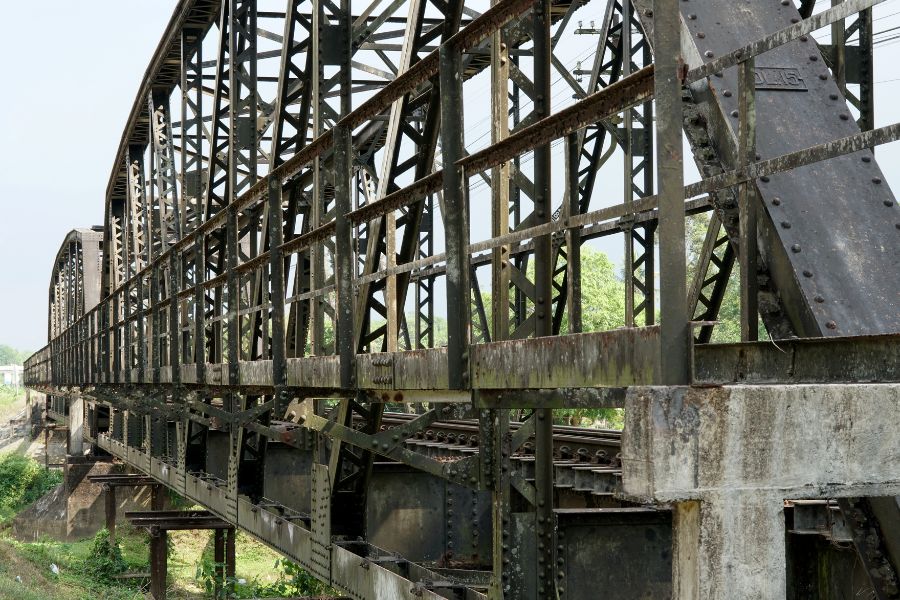Steel Bridge Corrosion Protection: Essential Tips from CORCON Institute of Corrosion
Steel bridges are critical to infrastructure, connecting communities and facilitating transportation. However, they are highly susceptible to corrosion, which can compromise their safety and longevity. The CORCON Institute of Corrosion (CIC), established in 2014, is dedicated to promoting corrosion awareness and protection. Here, CORCON provides key tips for steel bridge corrosion protection.
Regular Inspections and Maintenance
Frequent inspections are vital to catch early signs of corrosion. Regular maintenance prevents minor issues from escalating into major problems. Inspections should focus on identifying rust spots, structural weaknesses, and other indicators of corrosion. Addressing these issues promptly can significantly extend the lifespan of a steel bridge and is essential for effective steel bridge corrosion protection.
Protective Coatings
Applying protective coatings, such as epoxy or polyurethane, creates a barrier against moisture, chemicals, and other corrosive elements. These coatings need to be applied correctly and regularly inspected for wear and tear. Re-coating should be part of routine maintenance to ensure ongoing steel bridge corrosion protection.
Cathodic Protection
Cathodic protection is an electrochemical method used to control the corrosion of metal surfaces. By making the steel a cathode in an electrochemical cell, this technique effectively prevents it from corroding. This method is particularly useful for submerged or buried structures.
Use of Corrosion-Resistant Materials
Whenever feasible, opt for corrosion-resistant materials like weathering steel or stainless steel. These materials are designed to withstand harsh environmental conditions, reducing the need for frequent maintenance and repairs. Weathering steel, for instance, forms a stable rust-like appearance after exposure to weather, protecting it from further corrosion and enhancing steel bridge corrosion protection.
Environmental Control
Controlling the environment around the steel bridge can significantly reduce corrosion. This includes managing factors like humidity and pollution. Installing dehumidification systems or implementing measures to shield the bridge from pollutants can minimize the corrosive impact on the environment.
Design Considerations
Incorporate corrosion protection strategies in the design phase of the bridge. Ensure proper drainage to avoid water accumulation, and design features that do not trap water or debris. Simple design changes can drastically reduce corrosion risks and enhance steel bridge corrosion protection.
Regular Cleaning
Keeping the bridge clean from debris, bird droppings, and other contaminants is crucial. These substances can retain moisture against the steel surface, accelerating corrosion. Regular cleaning should be part of the maintenance routine to ensure the longevity of the protective coatings and the steel itself, thus contributing to steel bridge corrosion protection.
Advanced Monitoring Techniques
Utilize advanced monitoring technologies such as sensors and drones. These tools provide real-time data on the condition of the bridge, helping to detect and monitor corrosion effectively. Early detection through these technologies enables proactive maintenance, preventing severe damage and ensuring optimal steel bridge corrosion protection.
Training and Awareness Programs
Investing in training and awareness programs for personnel involved in bridge maintenance is essential. CIC offers a variety of educational and training programs, workshops, and certifications to keep your team updated on the latest steel bridge corrosion protection techniques. Knowledgeable staff are better equipped to implement and maintain effective corrosion prevention strategies.
Collaboration with Experts
Collaborate with corrosion experts and organizations like CORCON for guidance and support. Leveraging the expertise of industry professionals ensures the implementation of effective steel bridge corrosion protection strategies. CORCON provides a platform for professionals to share knowledge and best practices through conferences, seminars, and technology meetings.
FAQs: Frequently Asked Questions
Why are steel bridges susceptible to corrosion?
Steel bridges are exposed to environmental factors like moisture, chemicals, and pollution, which can cause corrosion over time.
How often should steel bridges undergo inspections?
Regular inspections are essential to catch early signs of corrosion. Depending on the location and environmental conditions, inspections may need to be conducted annually or more frequently.
How can environmental control minimize corrosion on steel bridges?
Managing factors like humidity and pollution can significantly reduce corrosion. Installing dehumidification systems and shielding the bridge from pollutants are effective measures.
What role does collaboration with experts play in steel bridge corrosion protection?
Collaboration with corrosion experts and organizations like CORCON ensures the implementation of effective corrosion protection strategies, leveraging the latest knowledge and technologies.
Closing Insights

Effective steel bridge corrosion protection is crucial for maintaining the safety, functionality, and longevity of steel bridges. By implementing regular inspections, protective coatings, cathodic protection, and using corrosion-resistant materials, the integrity of these vital structures can be preserved. Environmental control, thoughtful design, regular cleaning, advanced monitoring, and continuous training further enhance steel bridge corrosion protection. Collaboration with experts ensures that the latest strategies and technologies are employed to combat corrosion effectively.
CORCON Institute of Corrosion is committed to enhancing the quality and range of services in corrosion awareness, protection, and control, both in India and globally. Through our annual conferences, seminars, and educational programs, we strive to equip professionals with the knowledge and tools needed to combat corrosion effectively.
Image Reference: Freepik
Disclaimer: All trademarks, logos, and brand names are the property of their respective owners. All company, product, and service names used in this website are for identification purposes only. Use of these names, trademarks, and brands does not imply endorsement.
